The crowd was starting to grow bigger at Cheng Hoon Teng Temple grounds. By the gate, vendors greeted tourists with invitations to see and buy the peacock feathers in their gentle embrace while another group sat behind a set of bouquets. Beyond the gate outside the main prayer hall, tourists walked around the complex while carrying cameras around their neck. At the front porch and inside the hall, Chinese locals, oblivious to the snapping and clicking of the metal gadgets, gathered to light incense sticks and offer prayers for the departed loved ones. It was around nine in the morning.
I was tucked in one far corner of the site, seated on the ground with my back pressed against the gate, and trying to squeeze everything I was seeing into a single frame even though it was impossible with my low-tech camera, unpowerful lens, and limited talent. All of a sudden, a monk clad in yellow emerged from the right side of the temple, followed by believers on a single file. Their heads bowed and their hands held in front of their chest with palms touching or holding a tray. Call me an over-eager first-timer, but I had never seen anything like it before. I had seen monks before, but not during worship.
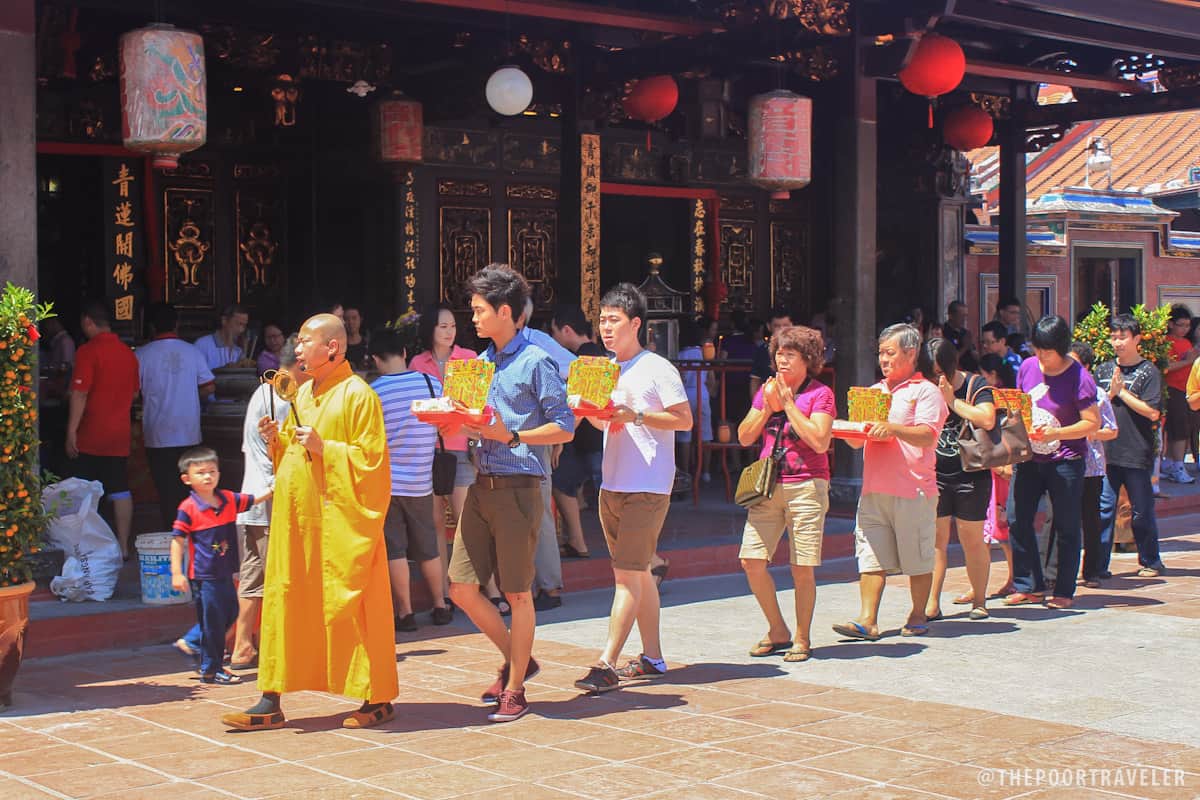
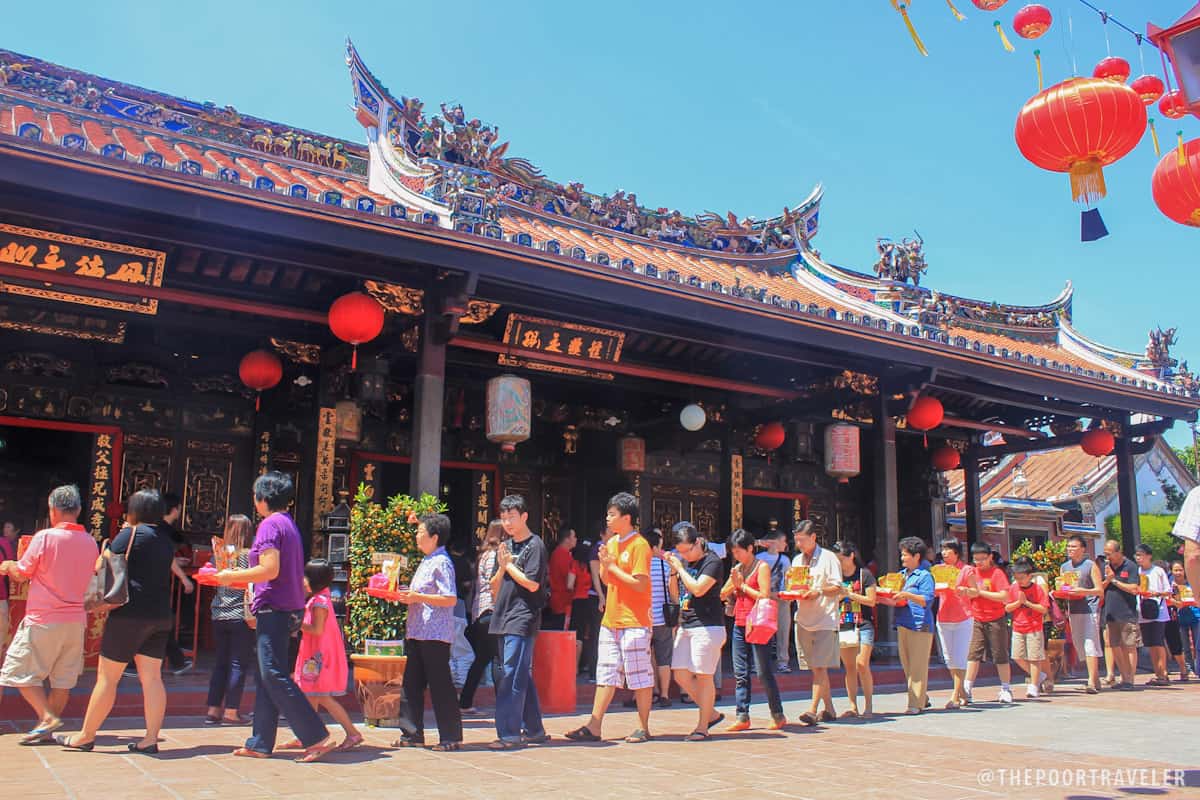
The Cheng Hoon Teng Temple
At the center of Malacca Chinatown, the temple complex lies along Jalan Tokong, which is part of the famed Harmony Street, home to many places of worship that belong to different religions. There is no denying that this structure is richly embellished and highly ornate. One look at the curved ridges of its roofs and you know that a lot of time had been devoted to building and designing this temple.
The Cheng Hoon Teng Temple is the oldest Chinese temple in the whole of Malaysia. When the Chinese migrated to Peninsular Malaysia, they brought along their culture and beliefs with them, thus establishing a strong Chinese culture in Malacca. Its official website does not indicate the exact year it was constructed, but it was some time in the early 17th century. How they are able to preserve and restore this 400-year old temple is admirable in itself. UNESCO awarded the site for outstanding architectural restoration.
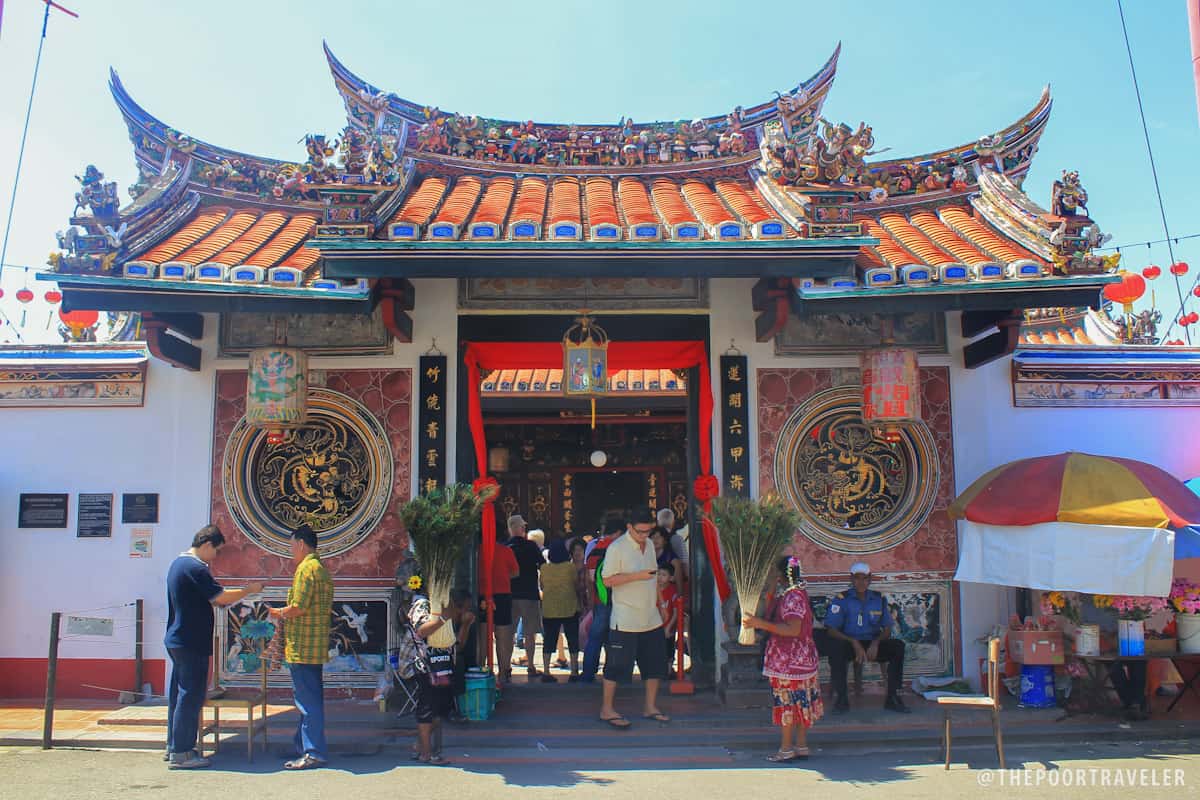
It was founded by Chinese Kapitan Tay Kie Ki (aka Tay Hong Yong). While it was primarily a religious site, it also served as the administrative center of the community and the court of justice during that time. But the main hall was built several years later, in 1704, by Chan Ki Lock, and was rebuilt by Chua Su Cheong (another Chinese Kapitan) in 1801. It is dedicated to Kwan Yi, Goddess of Mercy, but there are other deities revered at this temple including Ma Cho Po, Goddess of Seafarers; Datuk Poh Seng Tye Tay, Guardian Deity of Well Being; Datuk Hiap Tian Tye Tay, God of Justice; Thai Sway Yah, God of Worldly Human Welfare; and Pau Sen Ta Tek, the one with the gold face, the God of Welding.
Temple of Clear Clouds: Design and Architecture
Cheng Hoon Teng means Temple of Clear Clouds. Its general architecture — the curved roof, gable design, etc — is said to be influenced by the craftsmanship of Guangdong and Fujian in Southern China. It was also constructed in strict accordance to the principles of feng shui. Its granite tablets also state that the temple was laid out to have a view of Melaka River on one side and the high ground on the other.
But unlike other Chinese temples, there are no images of gods at the doors to the temple. The Eight Immortals of Taoism take their place. At the entrance to the hall, however, they are depicted as dragons with their instruments in their claws — flute, fan, knife, and lotus. The Eighteen Arhats (or Eighteen Lohans) adorn the walls of the hall. These carved images are now encased in glass because, they say, they almost vanished because of the constant smoke. Outside the hall are columns embellished with gold calligraphy by Robert van Gulik, a Dutch diplomat.
My favorite part of the temple is the highly ornate roof. Its curved ridges, a characteristic of Chinese architecture, are decorated with relief images of winged men (gods?), dragons, birds, flowers — all intricately carved and painted up to the very tip of the eaves! I could only imagine the time and effort put into these remarkable pieces of art and culture.
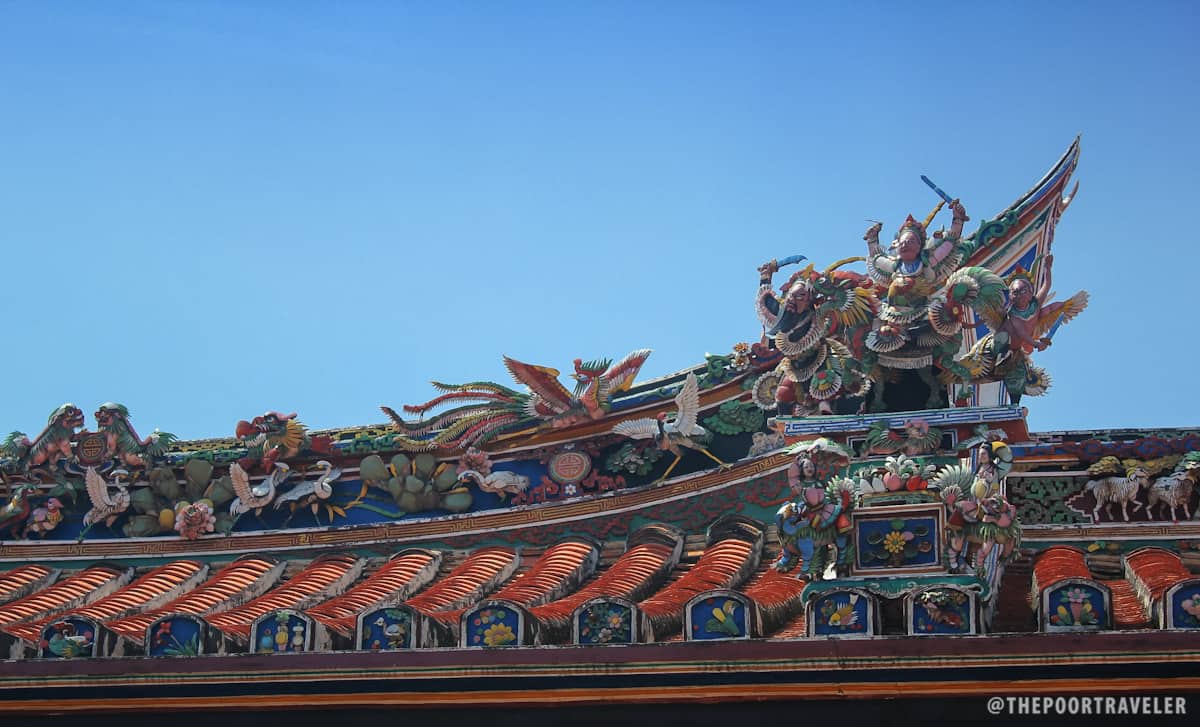
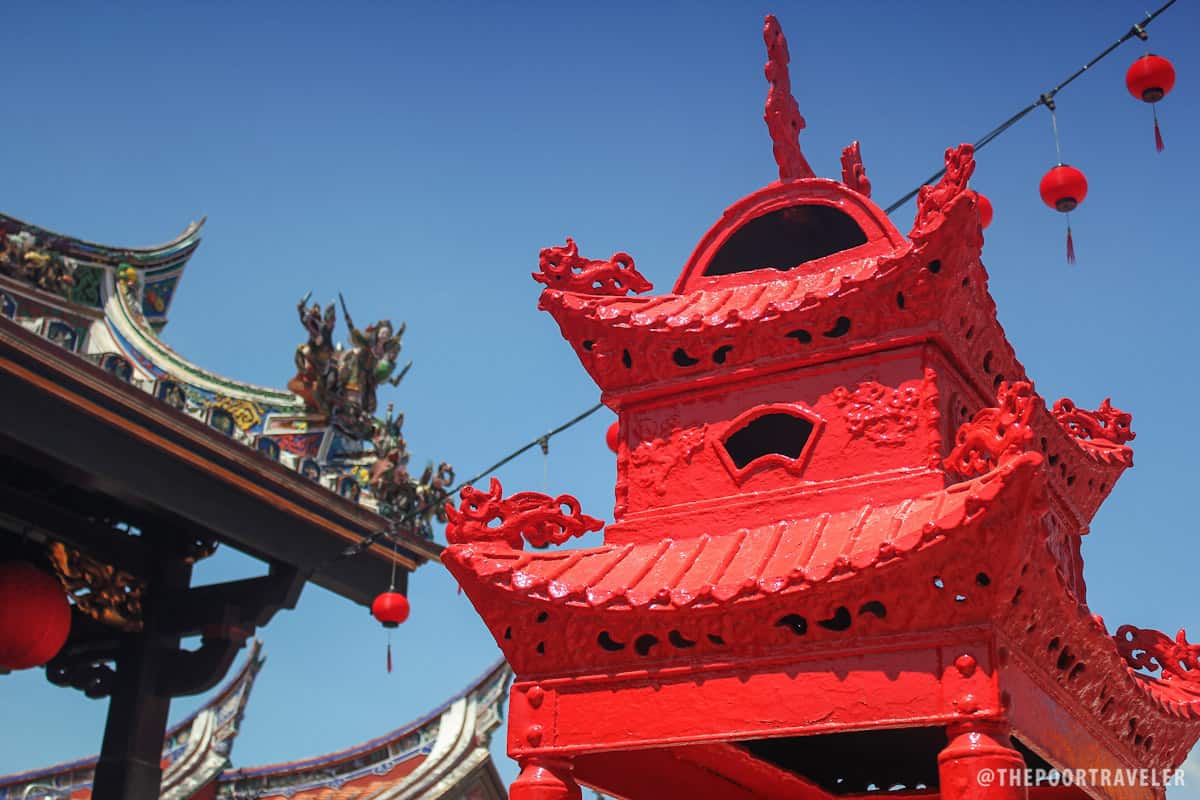
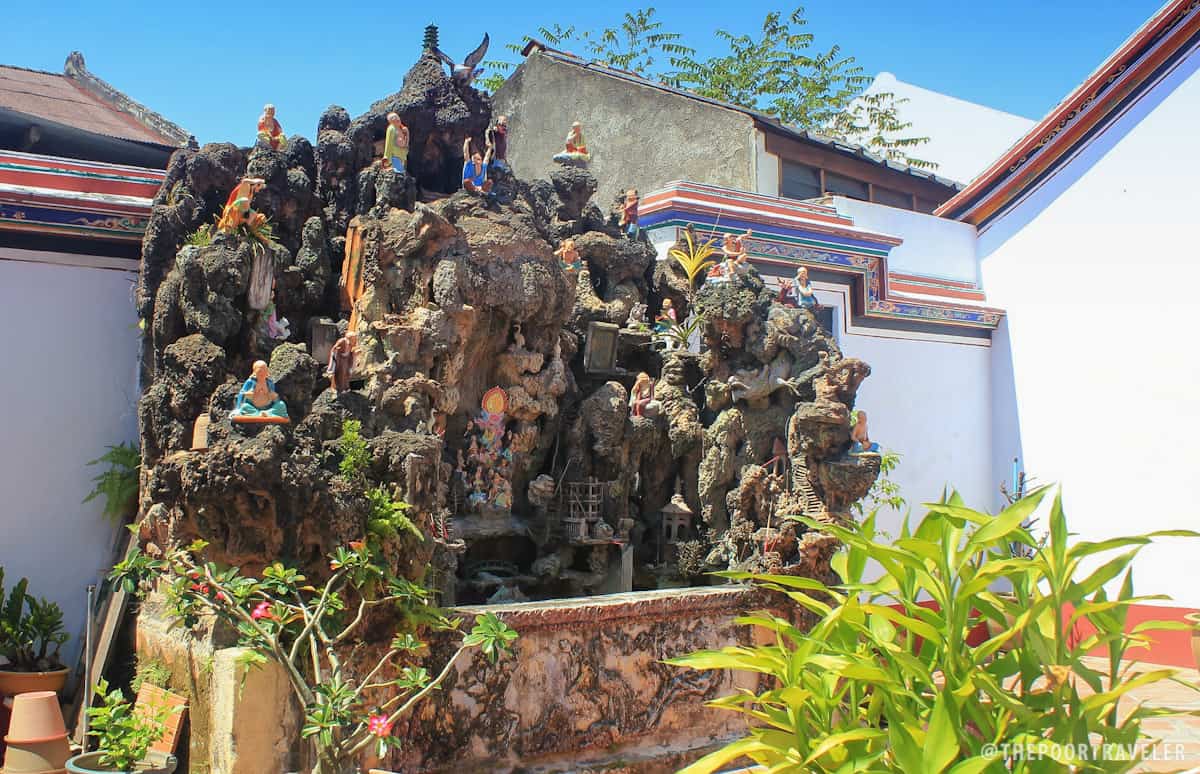
While I was exploring the site, I totally forgot that I was with my friends Ces and Astrid when I arrived. I was so lost in the beauty of the place. At the stone garden behind the temple, I walked past a another tourist who was taking his time at every interesting point of the complex. He pointed at the smaller statues of the Eighteen Lohans featured at the stone garden, and I came to take a look, too.
I bumped into him again in the crowd when both of us were looking up, taking pictures of the roofs while walking. It was at that moment when it dawned on me that even though the place was crowded at the time, everyone was quiet, at peace, and focused on what they came here for: some to pray, others to be blown away.
The tourist and I never exchanged a word. But I was sure he was just as astonished by the sights of wonder, the sounds of prayer, and the sweet scent of incense as smoke lingered overhead and then carried away from the crowd by the soft, gentle whisper of the wind to the clear clouds above.
Posted: 2012 • 8 • 16
Curious about what else to see in Malacca?
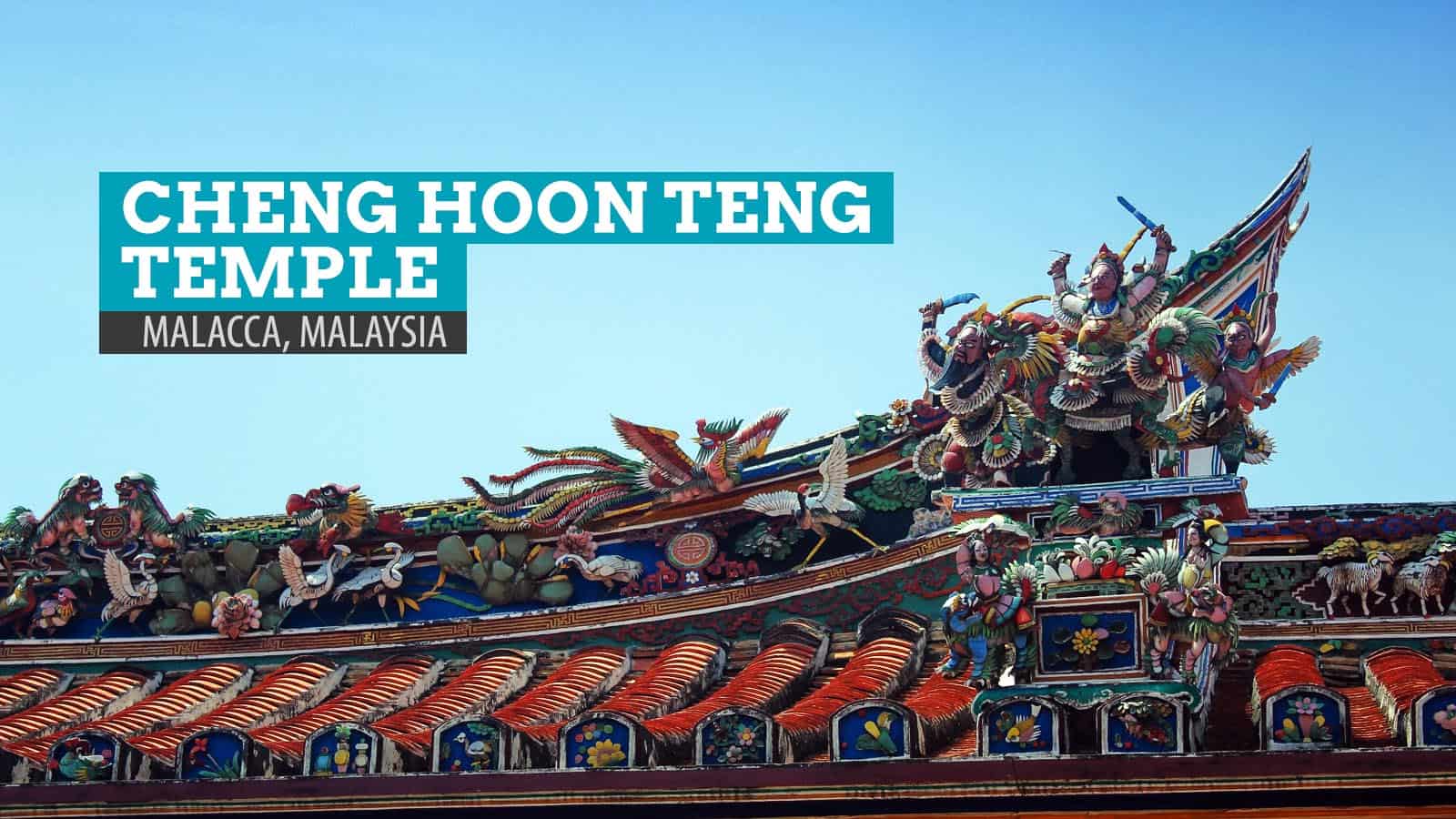


























I just love Chinese temples. Will surely be visiting this one when I finally get to Malacca!
[…] Sights in Malaysia, Melacca City, Cheng Hoon Teng Temple, Little […]
[…] Sights in Malaysia, Melacca City, Cheng Hoon Teng Temple, Little […]